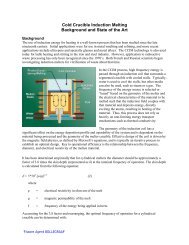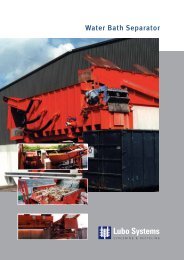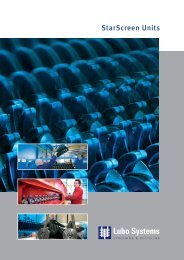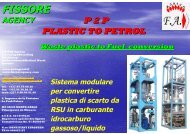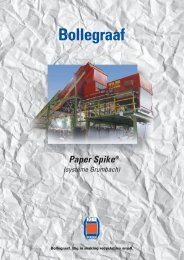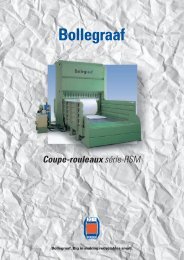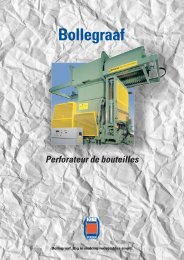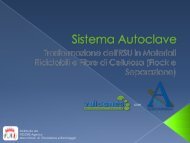3) P2P FROM PLASTIC TO PETROL - Mar 08 - FISSORE Agency
3) P2P FROM PLASTIC TO PETROL - Mar 08 - FISSORE Agency
3) P2P FROM PLASTIC TO PETROL - Mar 08 - FISSORE Agency
Create successful ePaper yourself
Turn your PDF publications into a flip-book with our unique Google optimized e-Paper software.
<strong>FISSORE</strong><br />
AGENCY<br />
P 2 P<br />
<strong>PLASTIC</strong> <strong>TO</strong> <strong>PETROL</strong><br />
5.4 The Process<br />
The process technology is designed to be a flexible system to convert the plastics into liquid, gaseous or mixture<br />
products. By changing the catalyst mix we can obtain either LPG, mixture of LPG and petrol like fuels or a<br />
mixture of both. The system has the flexibility of production and in case large quantities have to be handled<br />
then, additional modules can be added. Each module is designed for 20 tons per day production capacity.<br />
However smaller modules can be provided.<br />
5.5 Process Assembly<br />
1. Plastic Preheating and filtration.<br />
Plastics is a solid substance. Plastics are segregated from other waste coming from the Municipal solid waste or any<br />
other industrial locations. The waste plastics are cleaned in an autoclave system to remove debris and<br />
contamination. The cleaned plastics have reduced volume.<br />
Plastics are preheated and brought into a molten condition into the Reactor vessels .<br />
The system consists of a Hopper which holds 2 tons of waste plastic. The Hopper delivers plastic material through a<br />
conveyor system to a pre-heater. The pre-heater is heated through Thermic fluid up to a temp. of 250°C. The<br />
plastic throughput is measured and the heating cycles are adjusted to the feed rate .<br />
2. Heating and Catalyst Mixing.<br />
The molten plastic is then pumped into airtight reactors. The reactor is purged with Nitrogen to create a flameproof<br />
environment. The plastic is then heated from app 250 deg C to 380 deg C. The powder catalyst specially<br />
formulated for this reaction is then added through a pressure feed pump. The reactors have a holding<br />
capacity of 5 tons. Plastic is fed in the molten stage continuously into the reactors along with the catalyst. The<br />
Reactors have the capacity to convert 25 tons of plastic per day. Higher capacities can be achieved by adding<br />
more reactor modules to the system.<br />
ALL our systems are ZERO air e mission



